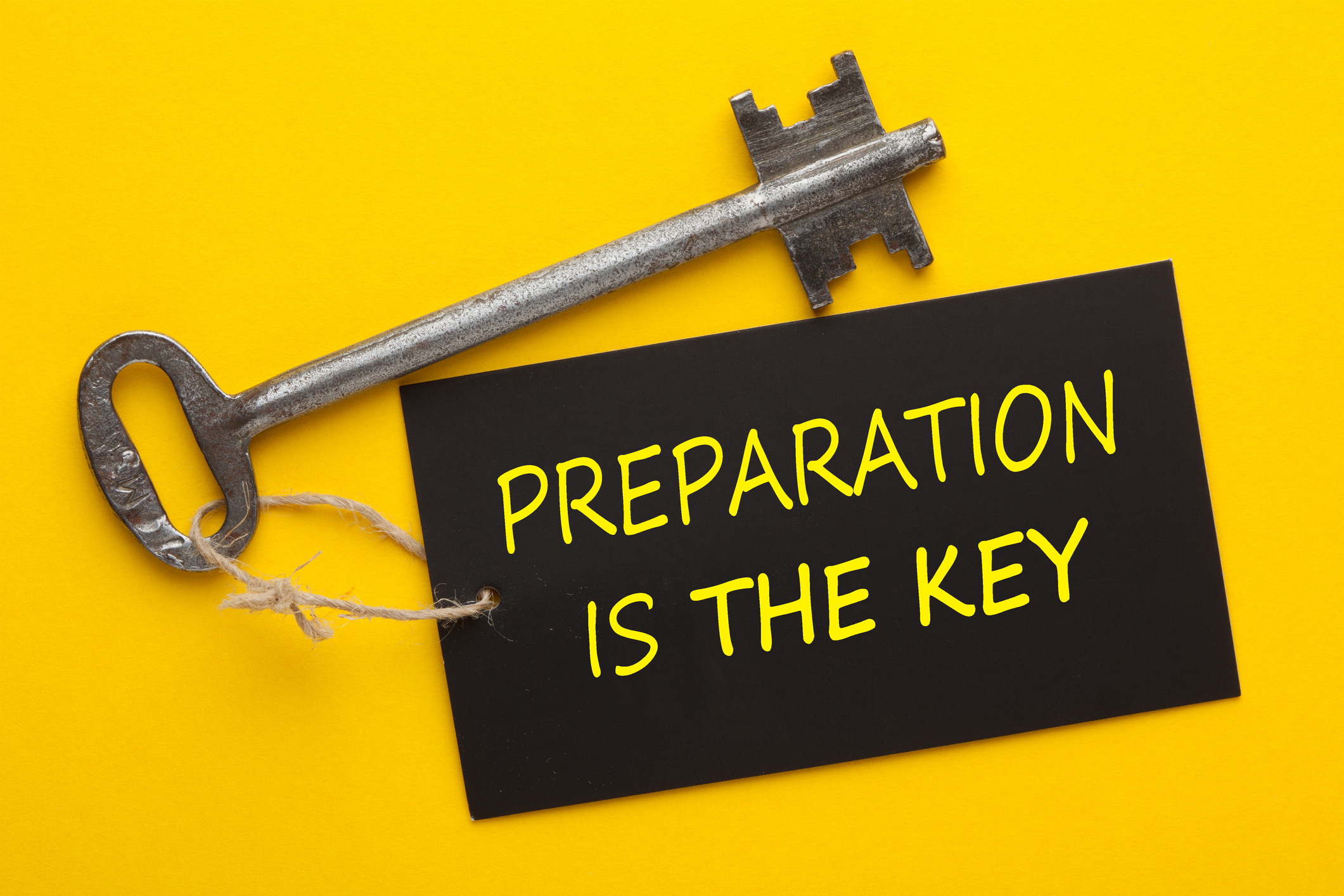By Karen Shirer, PhD.
Military Family Service Providers (MFSPs) along with Cooperative Extension and other community organizations play important roles in helping military families plan for and respond to hazards and disasters, especially if they are experiencing military and/or family transitions. This post is part two of Helping Families Prepare and Respond to Disaster and Hazards which addresses five areas these MFSPs may focus on to support military families through a disaster and ensure that they are disaster-ready.
Most hazards and disasters that military families encounter cannot be prevented, but their negative impacts can be reduced with careful planning and response. The first post highlighted the need for planning for potential emergencies; attending to the COVID-19 pandemic and supporting military families’ mental health during disasters. In this post, collaboration with local organizations and government agencies, and accessing and sharing reliable information on hazards and disasters with military families are examined.
The content for these blog posts stemmed from an interview with Dr. Angie Lindsey. She offers important factors to consider related to disasters for military families going through transitions. Dr. Lindsey works at the University of Florida and served as the lead facilitator for the Military Family Readiness Academy (MFRA) series on Disaster and Hazard Readiness Foundations . Below, Dr. Lindsey’s interview highlights on disaster and hazard readiness are integrated with additional resources to help MFSPs better respond to and support military families in transition. Together, you will find important guidance on better serving military families during disasters.
Step 4: Collaborate with local disaster responders like government and non-government agencies and organizations
Military families face increased risk because they frequently move from one geographic region to another in which the natural hazards and disasters may differ. These relocations result in change of residence, community, job, child care, health care, schools, and more. Many military families in transition often experience less accessibility to local resources that could help in the event of a disaster.
Collaboration was a recurring theme in Dr. Lindsey’s interview and throughout the first three sessions of the Disaster and Hazard Readiness Foundations. In the first session, she described the major players in the multi-level disaster management system that includes the federal government, state governments, local governments and community response teams, and individuals and families.
The disaster system is complicated and MFSPs will want to understand how to navigate it in order to better support military families in transition to prepare and respond to disasters. The first session provides a good primer on the different levels of the system and how to navigate them as well as basic information on types of disaster, integrated phases of disaster management and important terminology. Equipped with this information as a foundation, you can identify who to work with in your community for disaster readiness and begin to make those connections before a hazard or disaster occurs.
When MFSPs take a “collaboration stance,” military families are more likely to have access to resources and programs to ensure resilience in the event of a disaster. A recent post, Collaboration: Breaking Down Silos and Building Networks to Support Military Families, describes a “collaboration stance” as first recognizing that no single individual, agency, or community can alone address all military families’ needs. MFSPs need to work together with key disaster stakeholders in order to provide comprehensive disaster readiness for military families. The blog goes on to provide 10 strategies for MFSPs to use. When applied to disaster readiness, MFSPs have an important toolbox for their work with military families. They include:
-
- Learn about the military families’ specific needs related to disaster readiness, e.g., military families caregiving for special needs adults and children, or those transitioning to a new community.
- Connect with disaster readiness organizations and agencies in the community and on the installation, e.g., joining the local emergency services team that serves the same military families that you serve.
- Meet together with key partners before a disaster occurs and begin building trust with service providers, e.g., you will want to connect with the local food bank to discuss food security needs of military families.
- Remain open to other providers’ perspectives and help them understand military families’ situations, e.g., you may need to be patient with helping those who have not worked with military families before.
- Keep in mind the larger purpose — helping military families to ready for disasters in order to ensure their resilience.
Here are few examples of the Military Family Learning Network resources on collaboration to help MFSPs obtain a “collaboration stance” for disaster readiness:
Relationships for Readiness: OneOp Virtual Conference 2019 has archived webinars that focus on collaboration and the Family Readiness System.
Asset-Based Community Recovery Workshop provides an overview and applies the Asset-Based Community Recovery Framework to find ways to better support military family readiness and resilience when recovering from disasters. Interest participants register to participate by selecting by one of three dates — February 3, 2021 (11:00 am ET); February 23, 2021 (12:00 pm ET); and March 2, 2021 (2:00 pm ET).
Connecting with Communities in Asset-Based Disaster Recovery, will be held on March 31, 2021, from 11:00 am to 12:30 pm EDT. The community interconnections and assets that emerged from the Asset-Based Community Recovery Workshops will be shared. The webinar will provide resources for forging the community connections that will help us aid in disaster response and recovery for military families in the future
Practicing Connection in a Complex World is a podcast series that explores personal and collective practices that empower MFSPs to work together to help each other, military families, and communities improve resilience and readiness in an ever changing world.
The MFLN’s Community Capacity Building team offers numerous resources on building collaborations and community networks on its website.
Step 5: Access and share reliable information with military families
Communication strategies containing accurate, reliable and consistent information is an essential component for disaster readiness. Dr. Lindsey gave several important tips when selecting information and communicating while planning and responding to emergencies.
First and foremost, MFSPs want to take care to use reliable sources like what is in the MFRA Disaster Readiness series. Dr. Lindsey identified sources to use:
-
- Ready.gov provides comprehensive information to individuals, families and children, and businesses on responding to disasters and emergencies, including pandemics, cyber security and weather events.
- Local and state emergency management websites and other resources, including available Apps for mobile devices
- The military bases affiliated with the families that MFSPs serve
- U.S. Centers for Disease Control on emergency preparedness and response provides resources and information for individuals and households, health care professionals and planners and first responders on emergency preparedness and response
- Extension Disaster Education Network (EDEN) is a multi-state effort by Cooperative Extension that provides a resource hub of disaster preparedness and response materials.
- Local, regional and state cooperative Extension offices, many of which provide disaster readiness resources for the public and other audiences, e.g. you can find Extension Disaster Education Network at the University of Wyoming Extension.
Next, Dr. Lindsey encouraged MFSPs to consider any barriers that military families may have to receiving disaster information. Some military families will likely encounter challenges to receiving emergency information. Dr. Lindsey gave the example of farm workers in Florida in the aftermath of Hurricane Irma. Many tended to be isolated by language and technology barriers and had to continue working in local dairies during the emergency. Many farm workers were not able to evacuate as instructed by local authorities. Extension staff created fact sheets in the workers’ languages and visited farm workers door-to-door to distribute information. MFSPs may need to tailor their response in a similar manner.
MFSPs also need to be aware of the prevalence of misinformation that may spread on social media during a disaster. The COVID-19 pandemic shows the importance of being aware of misinformation and using only accurate and reliable information in an emergency. A recent study by the University of Oxford analyzed 225 pieces of information in English that had been rated false or misleading about COVID-19 (Types, Sources, and Claims of COVID-19). Their analysis found that in 59% of the examples, the information was initially accurate but had been reconfigured in a way that made it false. In about 38% of the examples, the claims were outright false. Most misinformation was spread by social media interactions — 82%.
Dr. Lindsey also discussed the results from three surveys that The Center for Public Issues Education, at the University of Florida, conducted on the public’s perception of COVID-19. The surveys were with a national sample of over 1,500 respondents each and focused on knowledge, response, belief, and concerns about COVID-19. The most recent results from the early August survey found that respondents primarily obtained information from people they know, including family and friends, followed by television, radio and websites.
Both these studies show that MFSPs will want to understand where military families they serve get their information and to direct them to reliable, accurate information, if necessary. In addition, MFSPs will want to be on the same page as their local collaborators in sharing information on disaster readiness and use accurate and reliable sources. Disaster response requires coordinated action in order to avoid misinformation and promote consistent messaging as well as connecting with others before a disaster or emergency.
Next Steps
This post contains many sources that can help you better prepare military families for disaster readiness. Here are several steps to take now to add to these sources:
-
- Register for the 2021 Disaster and Hazard Readiness In Action series of the Military Family Readiness Academy (MFRA).
- Check out archived 2020 MFRA series Disaster and Hazard and Readiness Foundations.
- Read this recent OneOp Family Transitions post by Jenny Rea, Preparing Military Families for Natural Disasters by Utilizing Resiliency Skills.
Did you miss Part I of this blog post? You may access it here.
References:
Brennen, J. S., Simon, F. M, Howard, P. N., and Klein’s Nielson, R. (2020). Types, Sources, and Claims of COVID-19. University of Oxford, England.
The Center for Public Issues Education, (2020). COVID-19. University of Florida Institute of Food and Agriculture.
 Karen Shirer, previous Associate Dean of the University of Minnesota Extension Center for Family Development. Karen is also the parent of two adult daughters, a grandmother, a spouse, and a cancer survivor.
Karen Shirer, previous Associate Dean of the University of Minnesota Extension Center for Family Development. Karen is also the parent of two adult daughters, a grandmother, a spouse, and a cancer survivor.
Photo source: Adobe stock















